Cold sesame noodle dishes dressed with sesame paste are popular in China and Taiwan, but today’s version with peanut butter is an American invention, according to the New York Times.
This makes good sense. Peanut butter is an American thing after all.
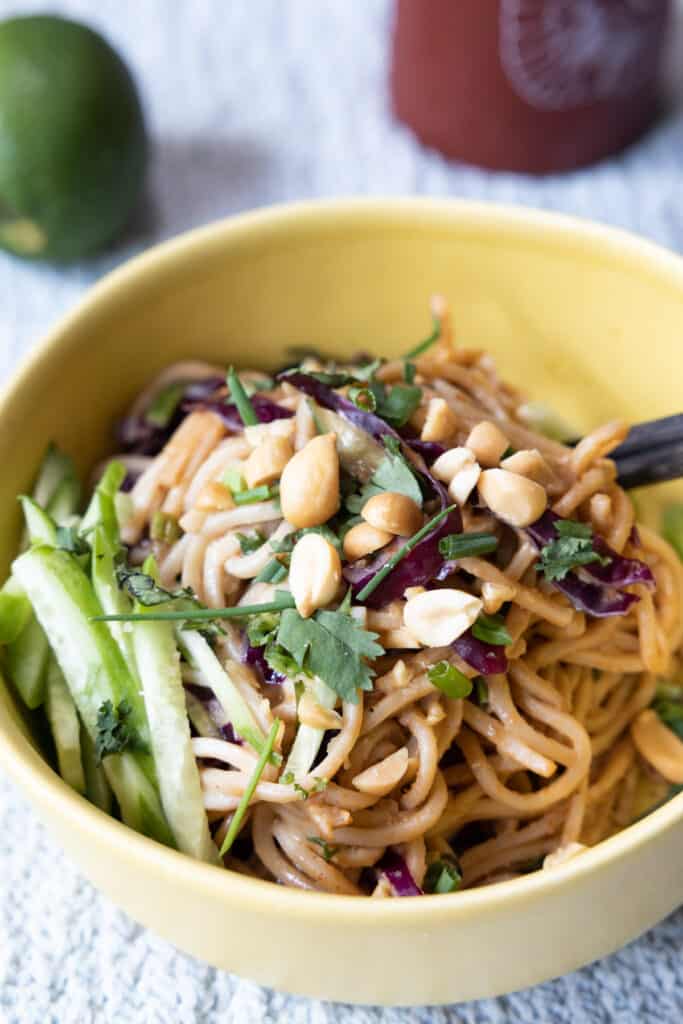
Turns out the peanut butter adds more creamy factor into the sauce, and it helps the sauce emulsify and coat the noodles better.
Sounds good right?
It’s very good!
Cold noodles are perfect for summer, because you can enjoy them cold or at room temperature, which satisfies your desire for something cool.
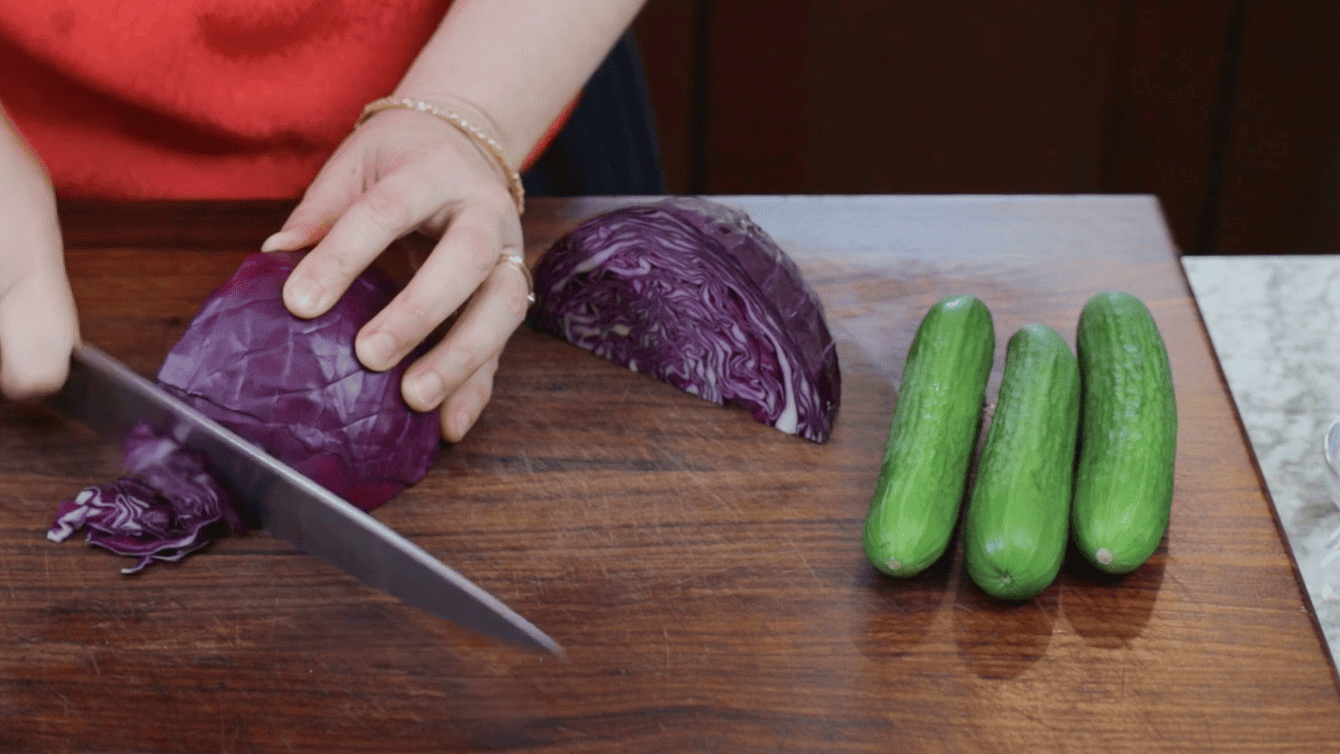
I’ve also added finely sliced red cabbage and cucumbers for crunch.
I tested this dish without the veg, but I enjoyed it a lot more with the crunch and freshness of the vegetables.
This dish would work well for meal prep.
Keep your prepared sesame noodles ready in the fridge for a satisfying anytime snack, or turn the noodles into a quick meal with extra protein, steamed veggies, and/or raw vegetables.
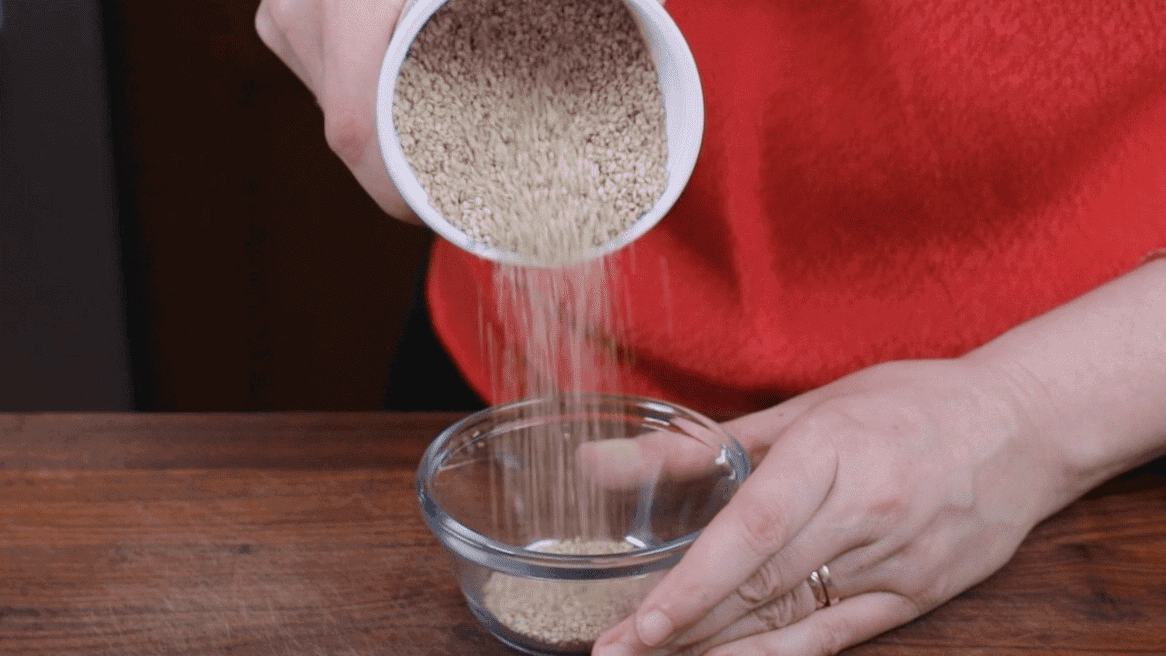
Sesame health benefits
Sesame paste (tahini) is a super healthy ingredient that’s loaded with vitamins E, K, B6 and magnesium, copper, calcium, iron and zinc.
In Ayurveda, sesame is best for Vata types due to its warming, sweet taste.
As an Ayurvedic nutritionist, I would recommend most people to enjoy sesame regularly for its calcium and healthy fat content.
While sesame isn’t my top source of healthy fats for everyday use, sesame is a good source for 2-3 times a week.
In this recipe, the warmth of the sesame, along with the ginger, garlic, green onions, and other spices, are essential to provide digestive support for the heavier wheat noodles.
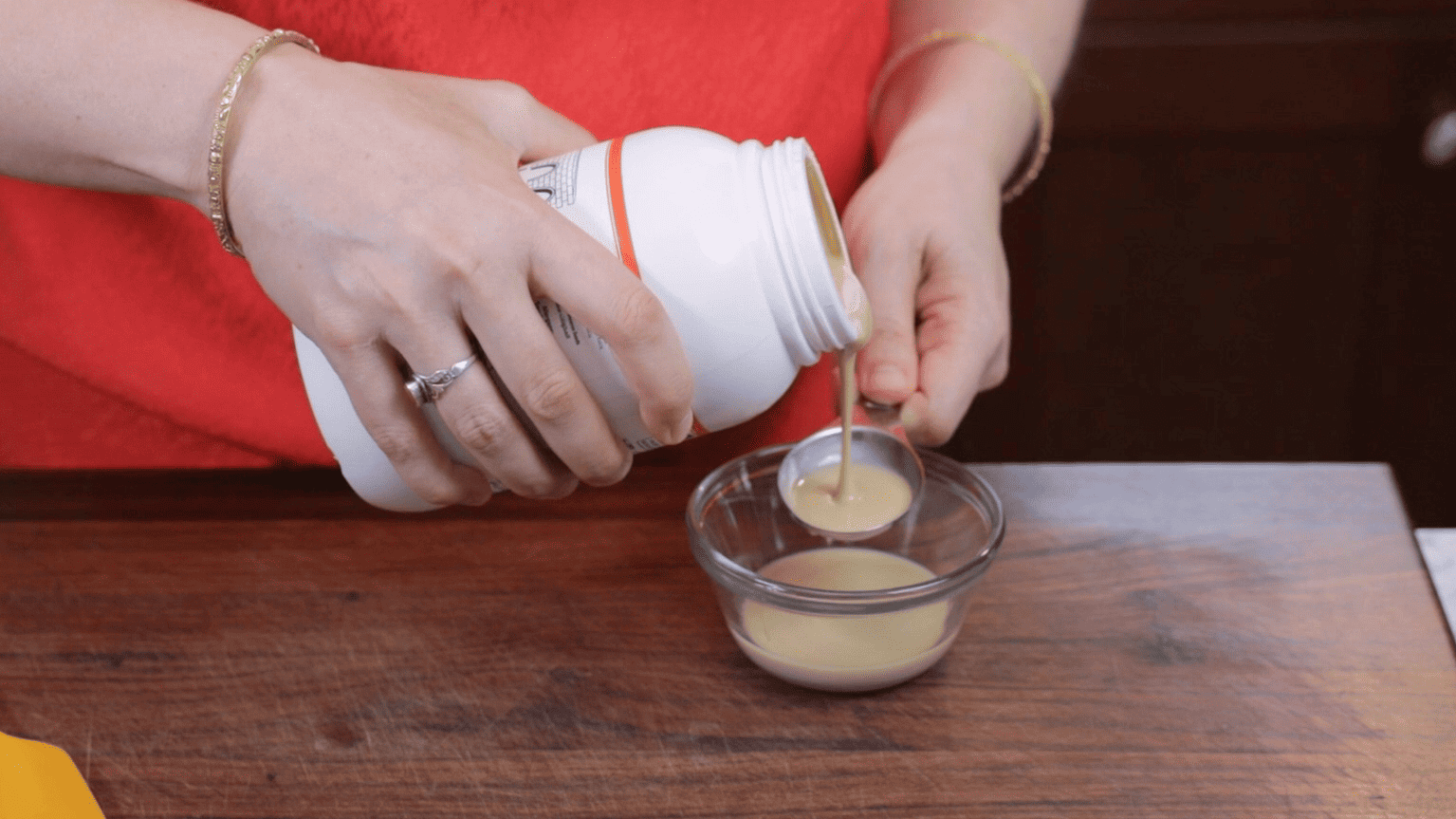
Which sesame do I use?
Sesame noodles are traditionally made with Chinese sesame paste, which is made with toasted sesame seeds.
Toasted seeds impart a strong sesame flavor, so if you love the taste of sesame I encourage you to invest in this specialty ingredient.
Tahini, which is also a sesame paste, is made with un-toasted sesame seeds, so the flavor is less intense.
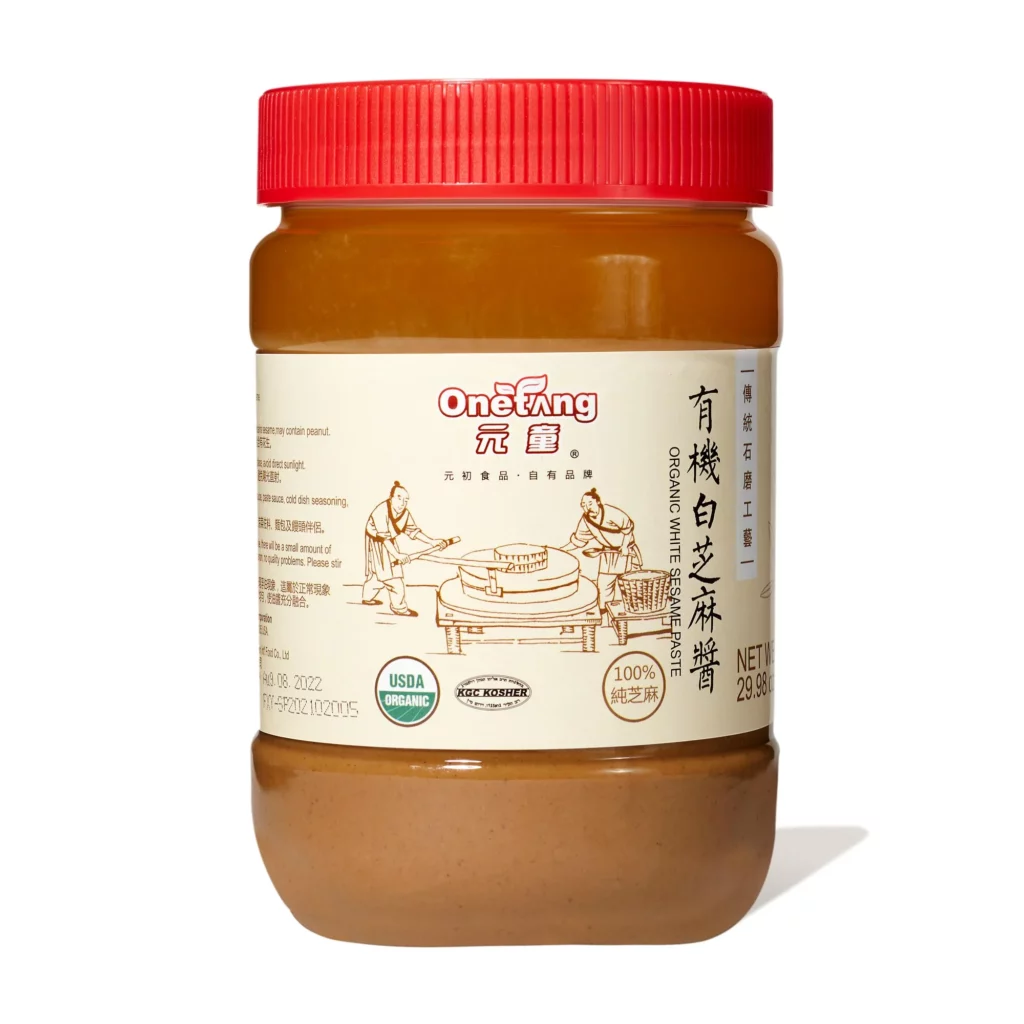
In this recipe you can substitute with tahini, or use more peanut butter instead if you prefer.
That said, I recommend that you insist on using toasted sesame oil as an essential ingredient for this recipe.
Toasted sesame oil is widely available. Buy a small bottle and use it up to make stir-fries and vegetables.
Be sure to store the oil in the fridge until it’s used up.
Which noodles do I use?
What you want for this dish is a simple, thin, dry, wheat noodle made with flour and water. Check the ingredients on the packages at your local grocery store.
Wheat-based noodles have a nice, chewy texture.
Avoid Italian pasta and noodles with egg.
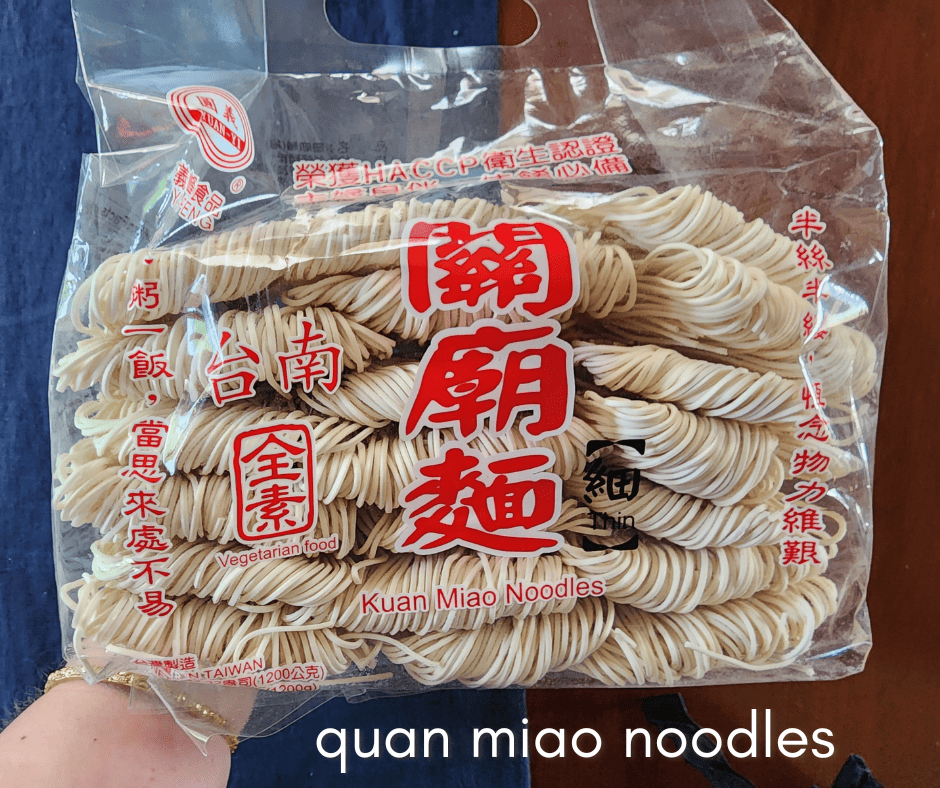
The very best noodle for sesame peanut noodles is guan miao noodles, which are a Taiwanese handmade specialty noodle commonly used in soups and stir-fries.
Guan miao noodles are made with just flour and water, and they are sun-dried.
These are available in different shapes, including straight, thick, and curly like ramen.
A good substitute would be the Japanese udon, soba, or somen noodles.
Substitutions
For a gluten-free or lower gluten option, use spiralized zucchini for half, or all of the noodles.
I recommend lightly cooking the zucchini in sesame oil in a skillet, and seasoning with salt and pepper.
For gluten-free noodles, substitute wheat noodles with pad-Thai style rice noodles.
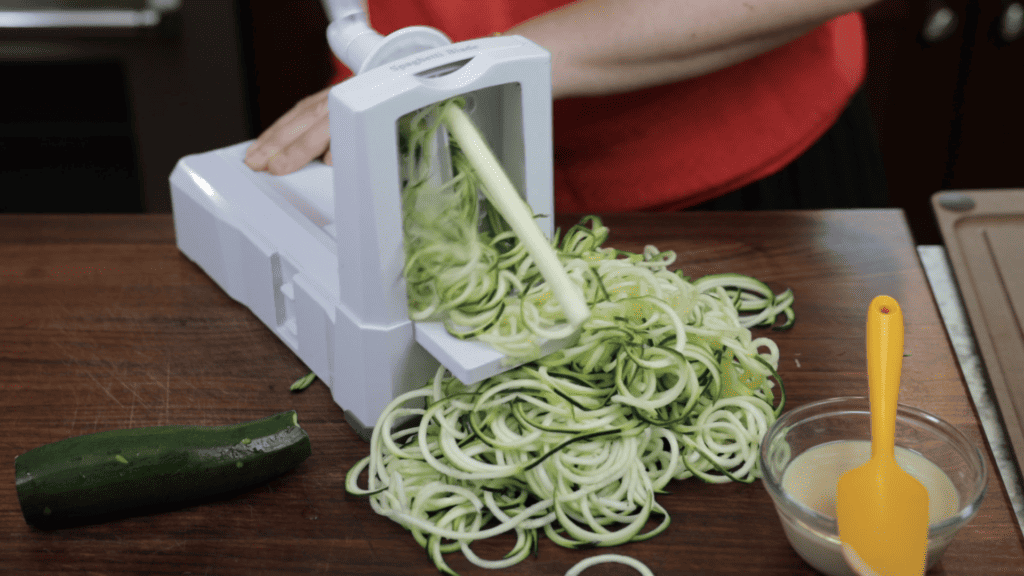
If you’re avoiding peanuts, use almond butter or sunflower seed butter instead of peanut butter.
For the chili, use sriracha, chili oil, Chinese chili oil, gochujang paste, or Tabasco instead of chili-garlic sauce.
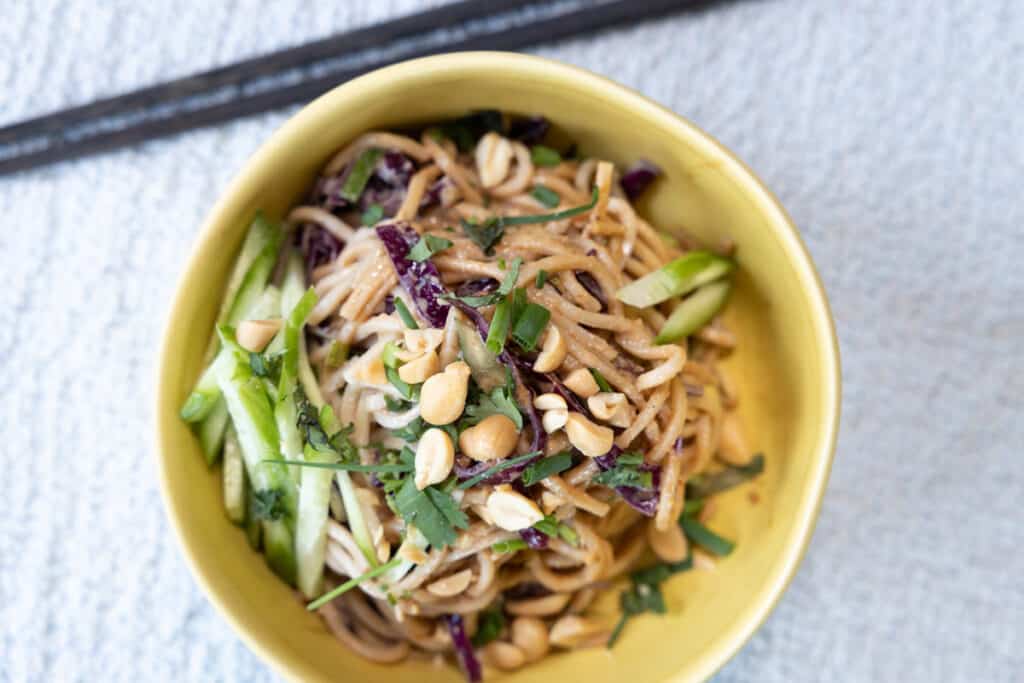
Serving ideas
Once your cold noodles are ready, you have a good snack, or a element that can be turned into a quick meal with one or more of the following:
- For extra protein: enjoy with 5-minute savory tofu, eggs, chicken, or fish.
- For extra cooked vegetables: steam your choice of carrots, cauliflower, snap peas, broccoli, bok choy, cabbage, or Asian greens and have them as a topping. Or make a miso soup and fill it with vegetables.
- For extra raw vegetables: enjoy with a green salad made with with red leaf lettuce, red cabbage, carrots, cucumber, red bell peppers, radishes, and/or radicchio.
- For extra fresh garnishes: enjoy with extra cucumber slices, radishes, and/or red bell peppers.
- For dessert: enjoy a bit of fresh fruit to bring in the light quality and help with digestibility of the heavier noodles.
Storage
Store leftover noodles in an airtight container in the fridge for up to 3 days, or in the freezer for up to 3 months.
Defrost frozen noodles fully in the fridge, and enjoy at room temperature.
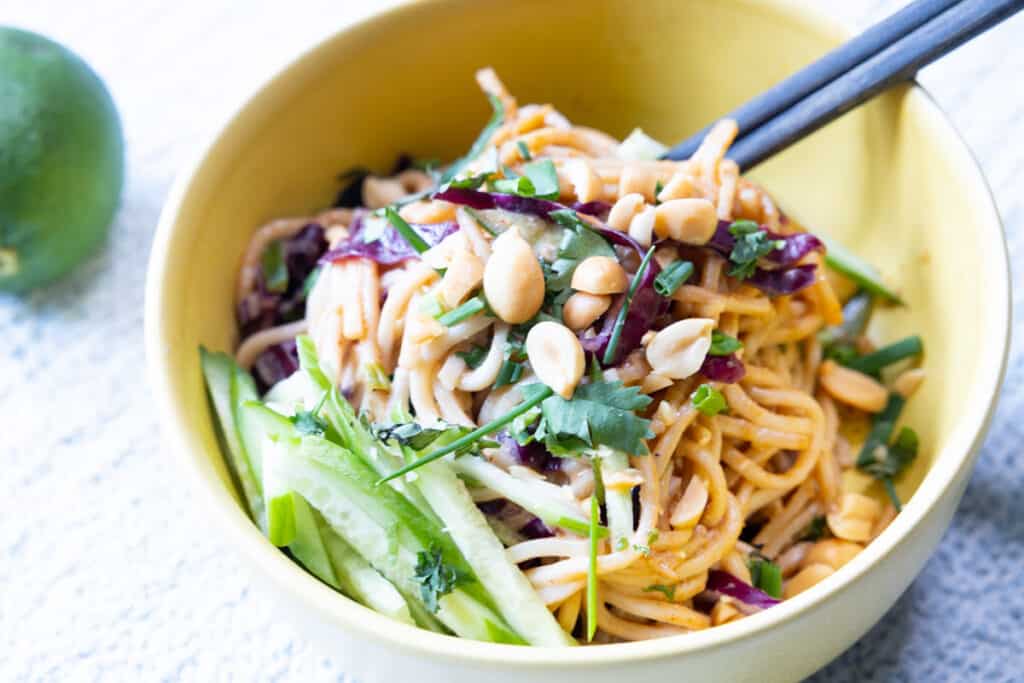
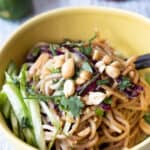
Cold Sesame Peanut Noodles
Helpful Kitchen Tools:
- medium mixing bowl
Ingredients
for the noodles
- 8 ounces guan miao noodles, (sub with udon, somen, lo mein, or ramen wheat-based noodles)
for the sauce (sauté)
- 1 tablespoon toasted sesame oil, (essential ingredient)
- 2 teaspoons ginger, finely chopped
- 1 clove garlic, finely chopped
for the sauce
- 2 green onions, finely chopped
- 2 tablespoons smooth peanut butter
- 3 tablespoons Chinese sesame paste, (sub with tahini or more peanut butter)
- 1 ½ tablespoons soy sauce
- 1 tablespoon rice wine vinegar
- 1 tablespoon mirin or Chinese cooking wine, (optional)
- 2 tablespoons hot water
- 1 tablespoon maple syrup or unrefined sugar
- teaspoon chili-garlic paste
- ½ teaspoon salt
- pinch black pepper
to mix in
- 2 cups red cabbage, finely chopped
- 1 cup cucumber, chopped into matchsticks
for the garnish (optional)
- sesame seeds
- chopped peanuts
- bean sprouts
- cucumber, chopped into matchsticks
- cilantro, roughly chopped
Instructions
for the noodles
- Bring a pot of water to boil over high heat. Add the noodles and stir well every minute or so until separated. Cook according to package instructions, careful not to overcook them.
- Strain into a large sieve and run cold water over the noodles for a minute or so to stop them from cooking. Set aside until needed.
for the sauce
- Finely chop garlic and ginger. Heat sesame oil in a tiny skillet on medium-low heat. Add the garlic and ginger and sizzle until very lightly browned. Transfer to a mixing bowl.
- Finely chop green onions. Set aside the green part of the onions for garnish, and place the remainder in a large mixing bowl with the garlic and ginger.
- Add peanut butter, tahini, soy sauce, rice wine vinegar, hot water, maple syrup, toasted sesame oil, and chili-garlic paste. Stir until smooth. It should be the consistency of heavy cream. If too thick, add a little more water.
to finish
- Transfer the cooked noodles into the bowl along with chopped cabbage and cucumbers and mix everything together using two forks.
- Enjoy with an optional garnish of sesame seeds, chopped peanuts, bean sprouts, cilantro, etc.
- Turn this into a complete meal with Taiwanese Cucumber Salad and 5-minute Savory Tofu, or with a piece of chicken or fish.
Nutrition


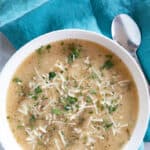
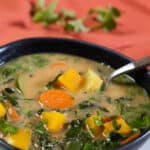
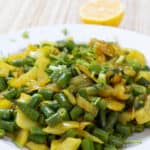

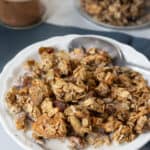

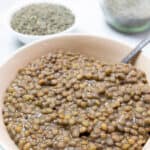
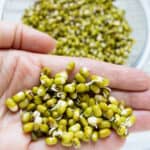
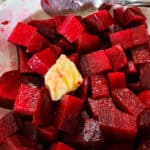


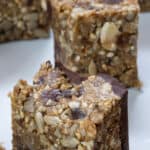

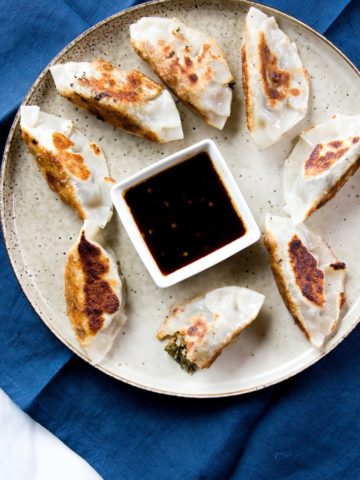
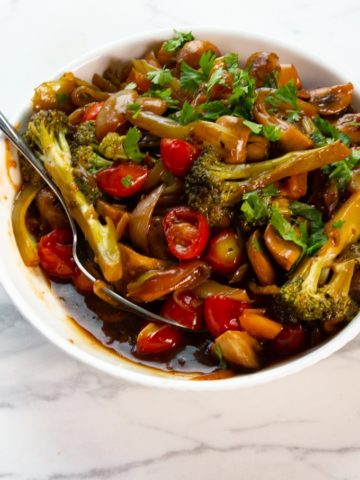
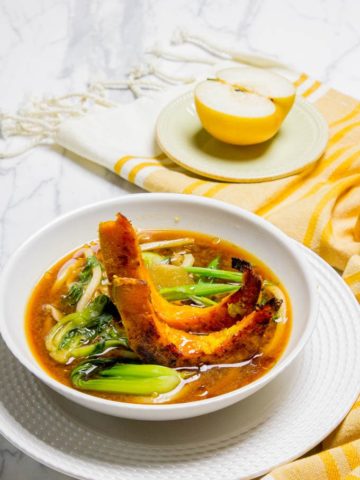
Leave a Reply